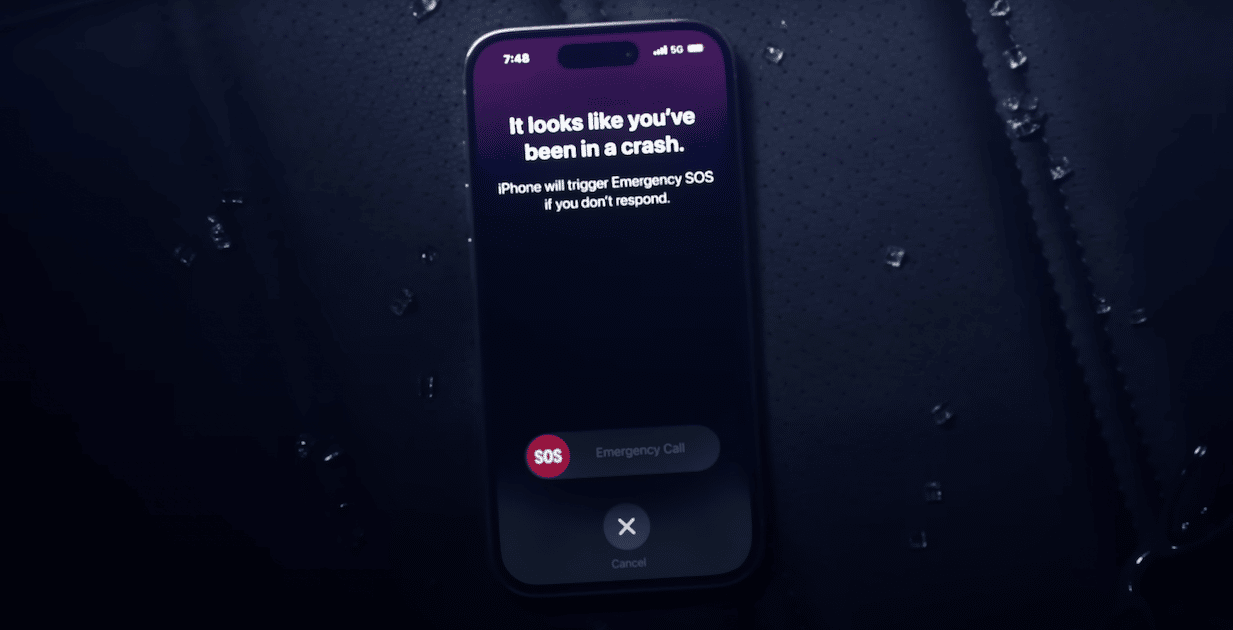Testing done by WSJ has shown that Apple’s Crash Detection works well as long as it has enough signals to identify collisions and crashes. iPhone 14, iPhone 14 Pro, Apple Watch SE, Apple Watch Series 8, and Apple Watch Ultra all feature crash detection as a standard feature that utilizes a combination of hardware sensors and software algorithms to detect when there is an accident.

iPhone 14 and Apple Watch Crash Detection tests
Joanna Stern from WSJ put Apple’s claims to the test by crashing some cars in a controlled environment to see if the feature works. She got Michael Barabe, a professional driver, to crash two cars with steel frames. These cars are made to survive the worst collisions and therefore were safe for testing. An EMT was also present onsite during testing for any potential injuries.
Michael crashed a derby car, and a junkyard car, into a 2003 Ford Taurus and a 2008 Dodge Caravan, both of which were parked in a junkyard. For the derby car crash, an Apple Watch Ultra, iPhone 14, and Pixel 5 were used, while for the junkyard car, an iPhone 14 Pro Max and a Pixel 6 were used. Google’s Pixel 6 also features crash detection that can be enabled from the Personal Safety app.
The results of the crashes were as follows:
- The first crash into the Ford Taurus was a head-on collision at 25 mph. The Apple Watch Ultra worn by Michael instantly detected the crash. Neither the iPhone 14 nor the Pixel detected the crash. The iPhone usually does not show an alert of the crash if the Apple Watch is being worn by the user, and shows the alert on it. The iPhone and Pixel in the parked Taurus did not detect the crash either though.
- In this second crash into the Ford Taurus, all the phones, except the Pixel inside Michael’s car, did not detect a crash.
- In the third crash, the Dodge was crashed by Michael’s Derby car at 25 mph. Only Michael’s Apple Watch Ultra and iPhone detected the crash, but the phones in either of the cars did not.
As per Apple, the following signals are used for Crash Detection:
- GPS, which indicates that the car is on a road, driving indication, and speed.
- Microphones, to detect loud sounds that can indicate a crash.
- Barometer, to detect a change in air pressure when airbags are deployed, and when car windows are closed.
- CarPlay or Bluetooth, to detect that the iPhone is in a car.
Apple says that crash detection can detect severe front-on, side-on, and rear-end collisions, as well as rollovers. The company also specifies that it may not detect all car crashes.
When a crash is detected based on the aforementioned signals, iPhone 14 line-up and the latest Apple Watch models show an alert that a crash is detected and automatically dial emergency services when a user is unconscious or unable to reach their device to cancel the call.
Another recent test by a YouTuber showed iPhone 14 crash detection working when crashing a car into scrapped vehicles.
There has already been an instance where a car crash was detected by an iPhone 14 Pro and it automatically called for help. So in real-world usage, the feature seems to work fine so far.
You can check out the complete video of the testing below: